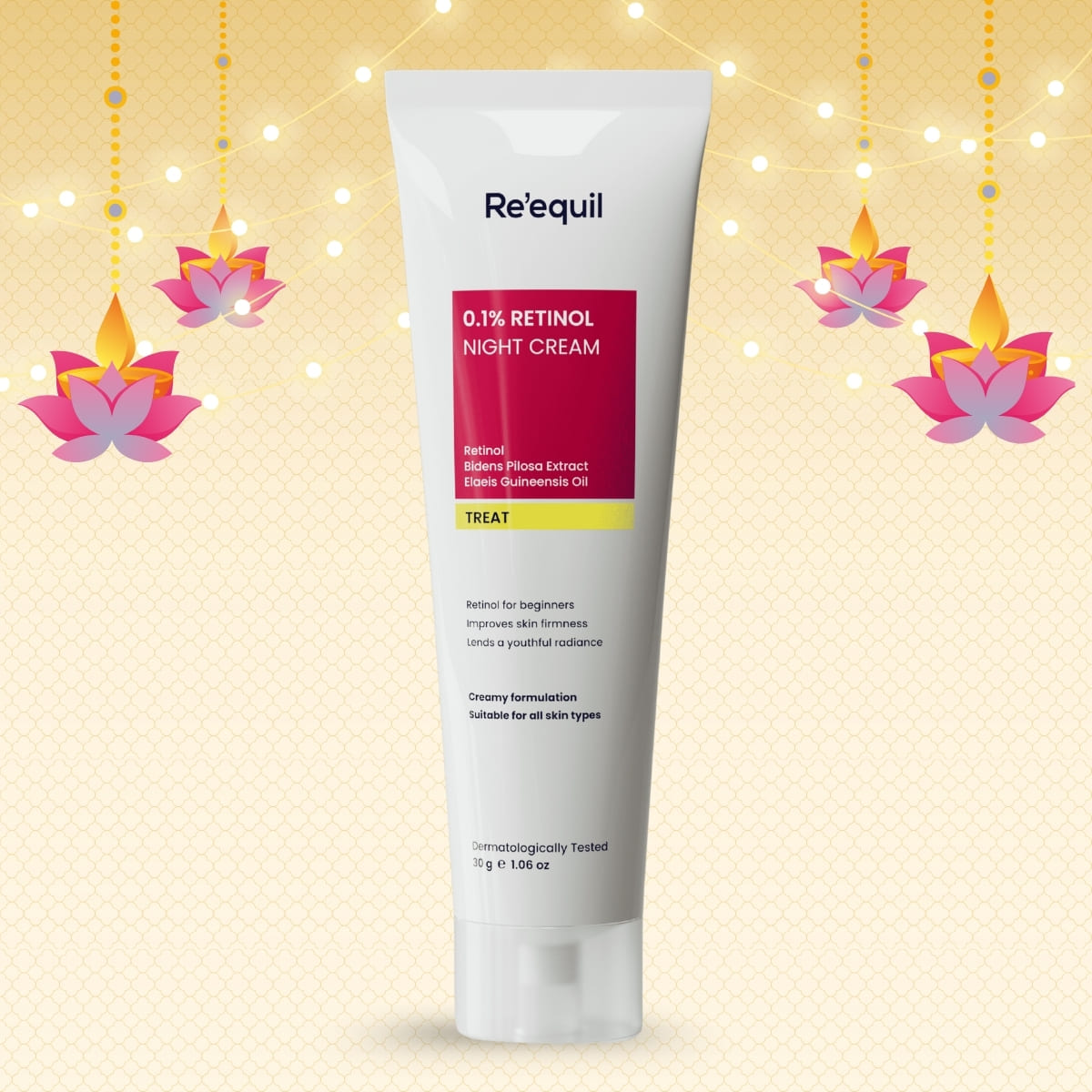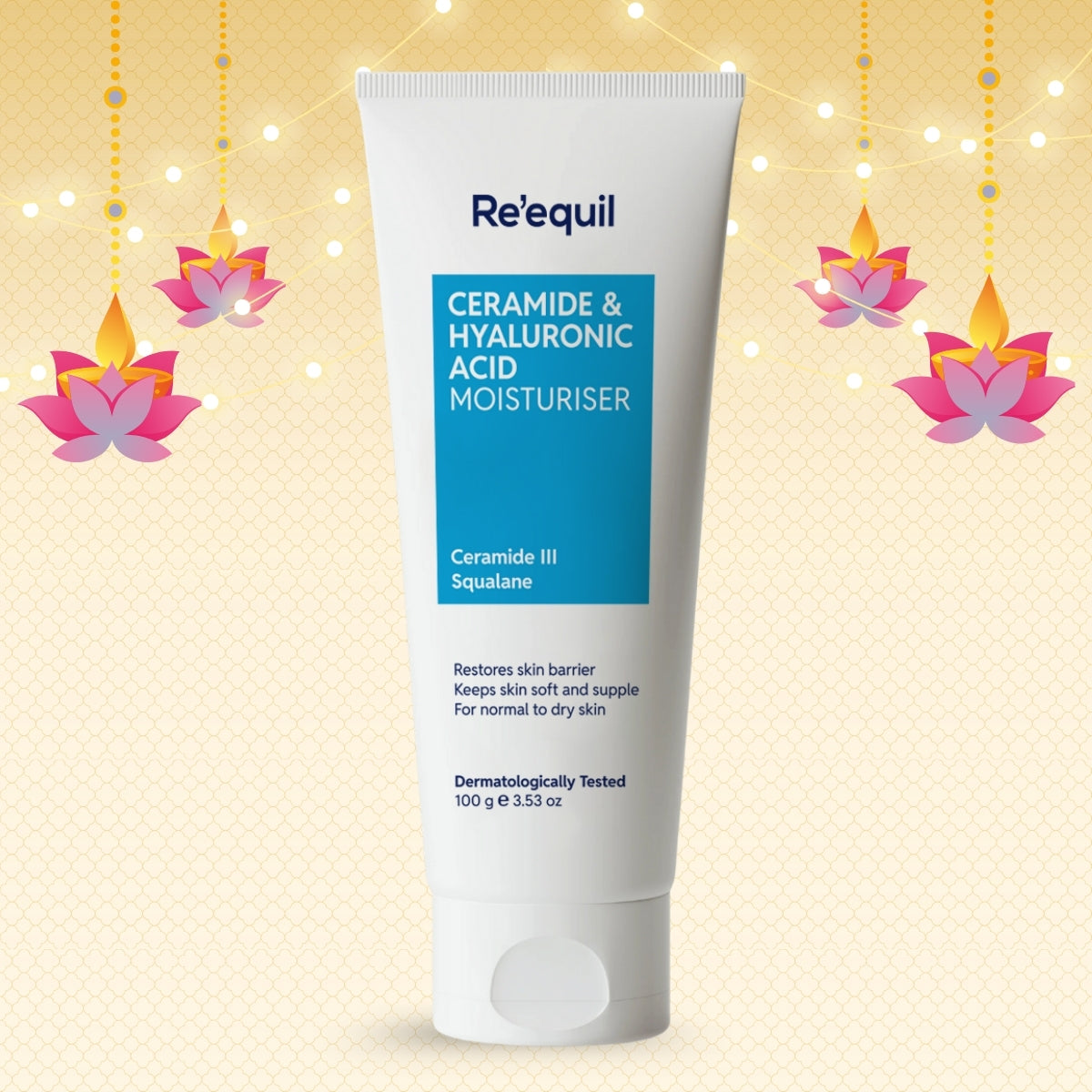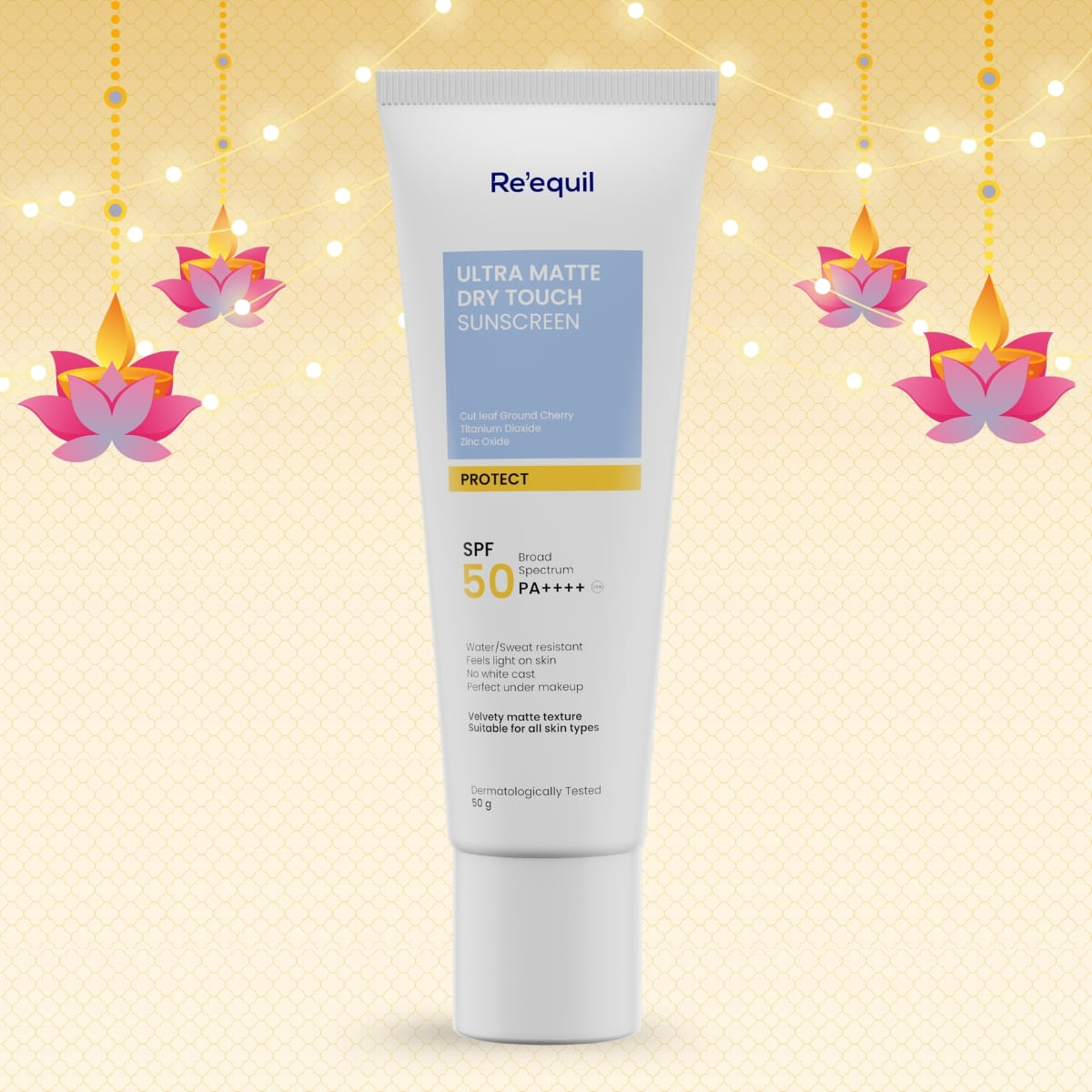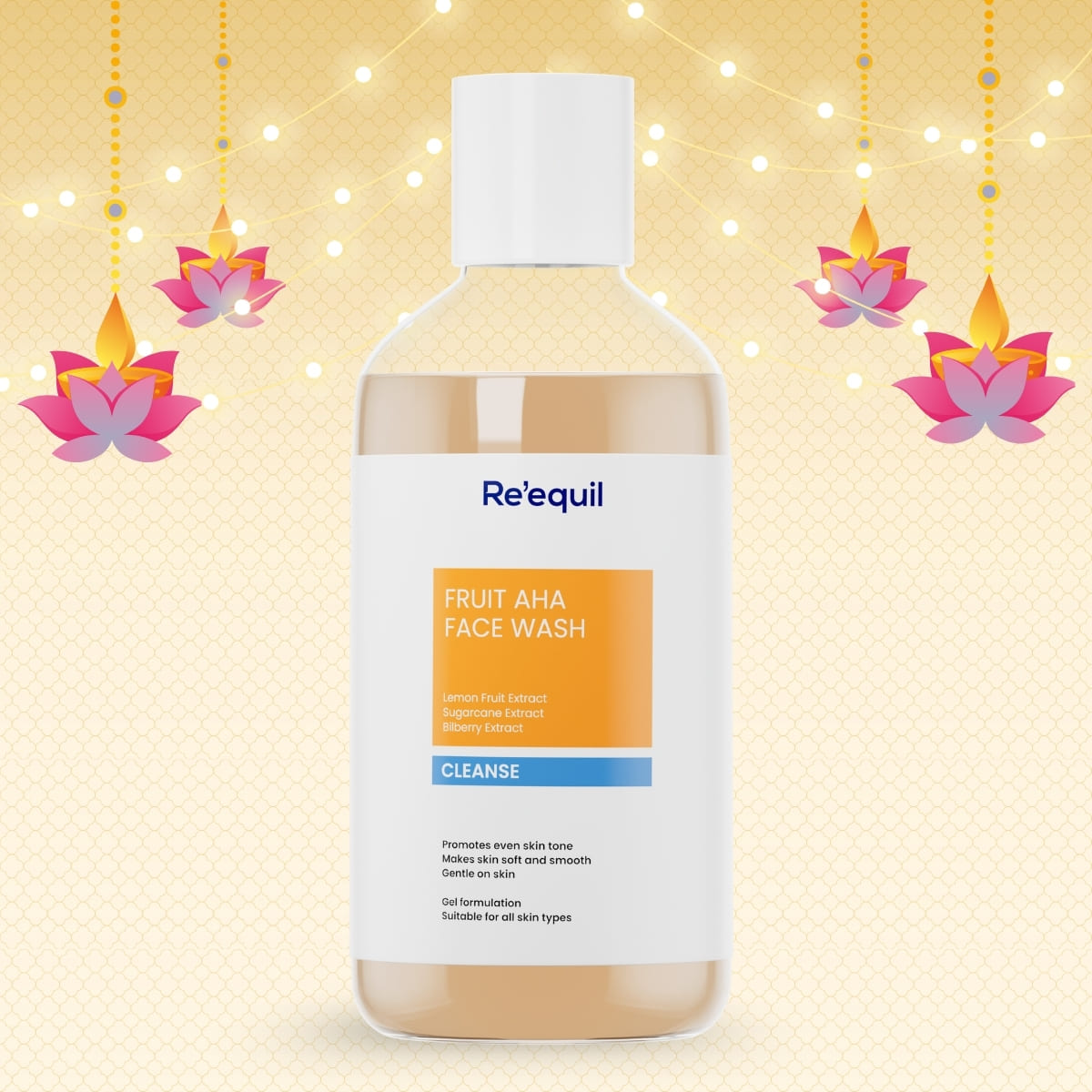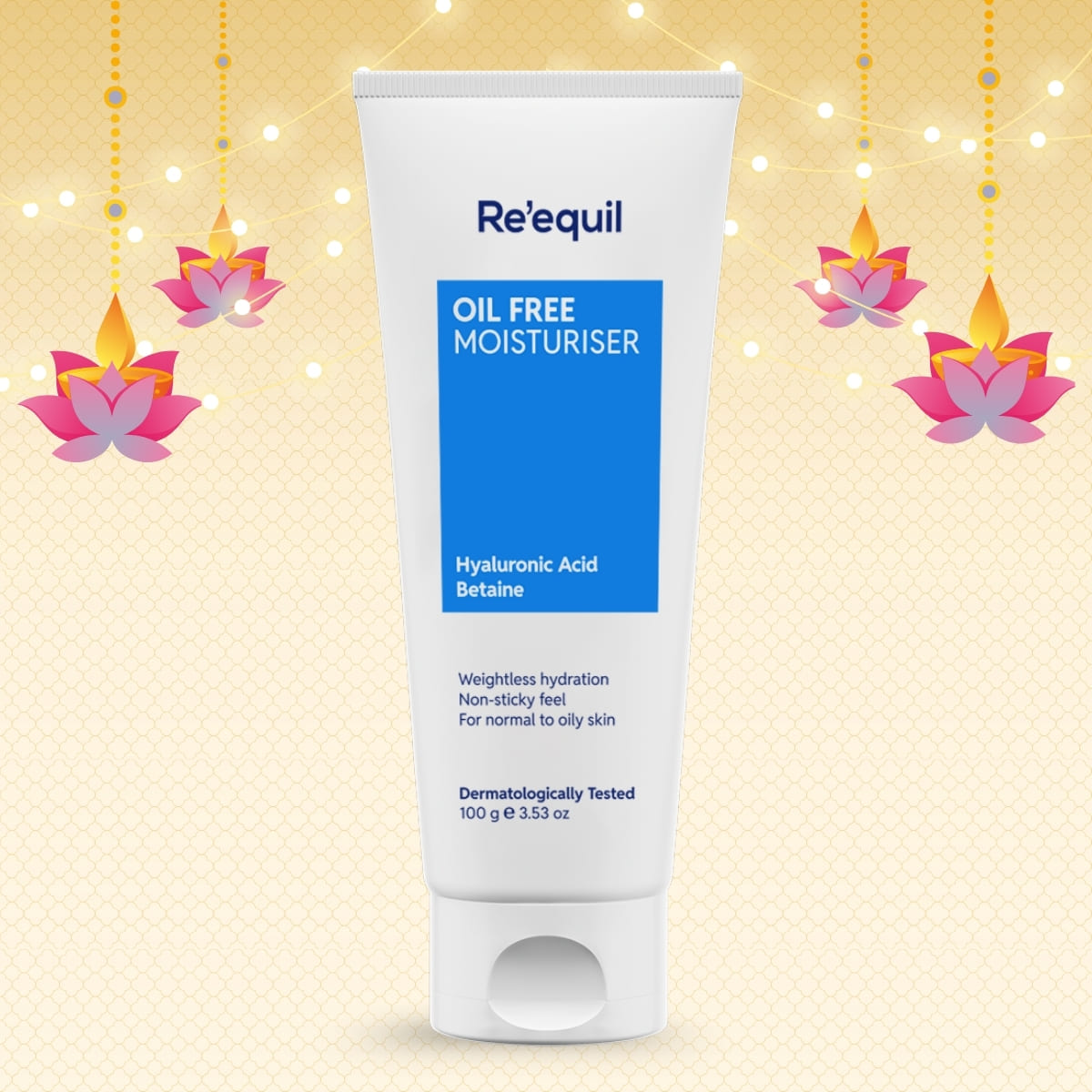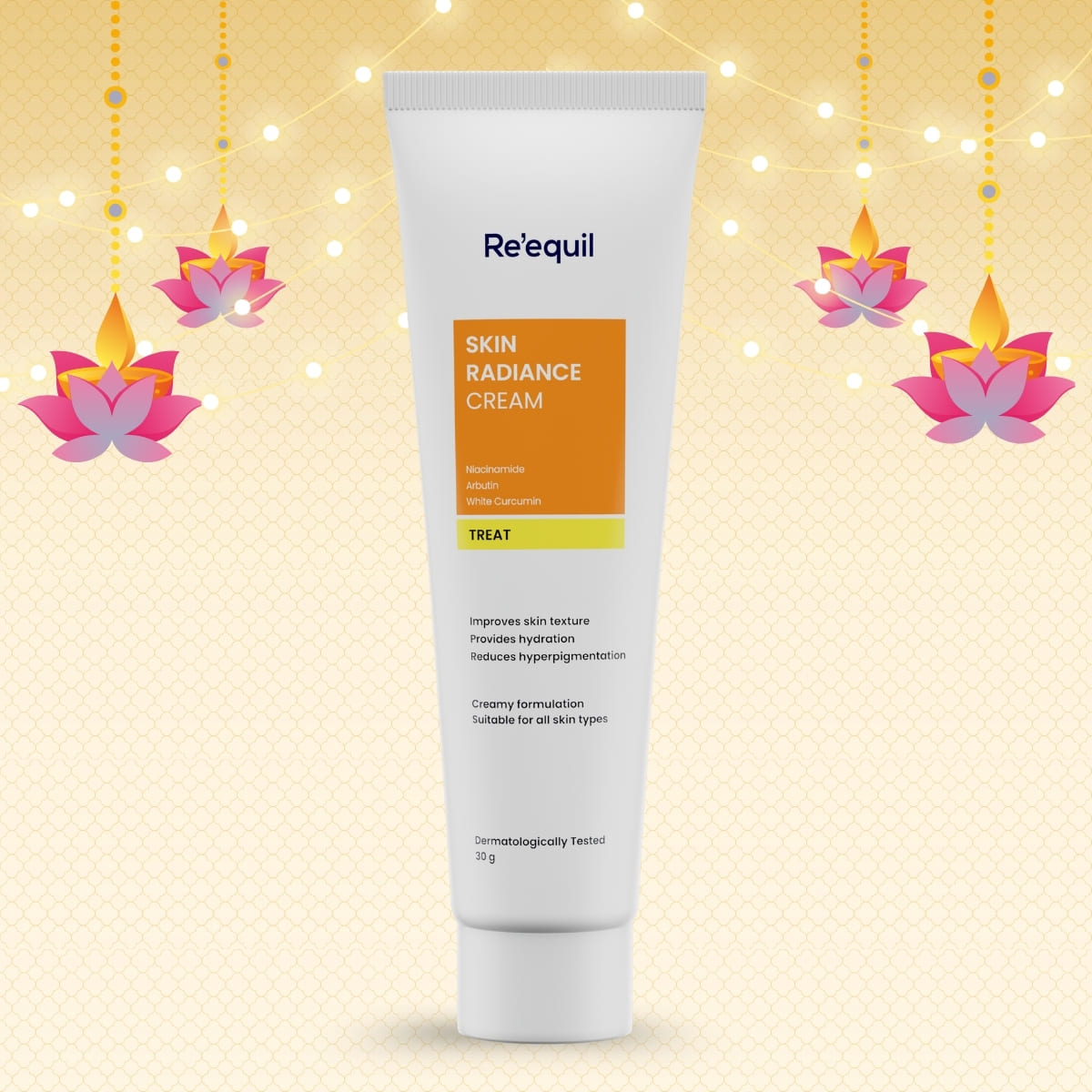This article helps you understand why dark spots and pigmentation occur on the skin, the types of, and the causes for pigmentation of skin. You will also be guided to the most optimum skincare products that help tackle dark spots and pigmentation.
Don’t we just love babies’ skin! So smooth, soft and blemish-free!
We are blessed with flawless, radiant, smooth skin when we are born. However, with time and age, this natural smoothness and glow gets affected by various factors, and dark spots appear on our skin. Pigmentation on face takes away from our natural radiance, and unfortunately, also our confidence.
Hormonal changes, pregnancy, exposure to UV rays, environmental aggressors, skin breakouts and inflammations, are what cause dark spots on face. Besides the facial skin, the neck area, elbows, knees tend to become darker than the other body parts that are usually kept covered. Also, as the skin under our eyes is extremely delicate and sensitive, under eye dark circles appear due to eye strain, skin dehydration, and UV exposure.
In a paper published in the Indian Journal of Dermatology, it is noted that “some skin tones (are) reported as more susceptible to pigmentation disorders than others, especially in Asia and India.” It goes on to explain that “A direct correlation has been observed between the geographical distribution of UV radiation and skin pigmentation worldwide. In India, a majority of subjects with an acne history present pigmented post-inflammatory marks.
Advances in skincare industry has ensured that we don’t unduly stress over face pigmentation. Since good skincare is about knowing the underlying cause of some skin issue, and then seeking treatment, we need to understand why black spots on face appear in the first place, and how to deal with them.
Types of Pigmentation on Skin
Our skin produces a pigment called melanin that gives it colour. Certain conditions increase melanin production leading to dark spots or hyperpigmentation.
Pigmentation or dark spots on skin can be of any of the following categories:
- Hyperpigmentation on face
- Darker skin areas including underarms, neck, knees and elbows
- Dark circles around eyes
- Dark spots caused due to acne
- Overall dark complexion due to sun exposure
Learn about these skin conditions and the underlying causes. Read on to know more about pigmentation and how to avoid it.
Hyperpigmentation on Face
Pigmentation on face manifests itself in the form of sunspots, freckles, solar lentigines, post acne scars and spots, and melasma.
Types of Hyperpigmentation
Freckles – Freckles or sunspots occur due to overexposure to the sun. The skin produces extra melanin to protect skin from prolonged sun exposure. People with fair skin are more prone to freckles.
Solar Lentigines – These are tan, brown or dark brown spots on skin, and are darker than freckles. They tend to appear on skin areas most exposed to the sun, such as the scalp, face, hands, arms and upper trunk.
Melasma – It is a kind of hyperpigmentation that mostly affects the skin of women. Though the exact causes are not clear, hormonal changes could be the reason for pigmentation on face.
Post Inflammatory Hyperpigmentation (PIH) – It is characterized by dark spots that are left after acne infection, injury, or wound. During skin healing, excess melanin production leads to skin discoloration.
Causes/Reasons for Pigmentation on Face
Dark spots on face may appear due to any of the following reasons:
- Excessive UV exposure can lead to sun/age spots.
- Hormonal changes like pregnancy can lead to melasma that causes dark spots.
- Pimples and acne can leave behind scars that lead to Post Inflammatory Hyperpigmentation on face.
- Wound, insect bite, injury or damage to the skin.
- Clogged skin pores that have dead skin cells piled up, along with dirt and oil.
- Certain medical conditions.
Once you assess the reason for pigmentation on face, you can go for specialized treatment procedures.
Chemical procedures
These procedures needs to be done under medical supervision by a trained skin care specialist.
- Hydroquinone Treatment – This should be done by your dermatologist. It leaves your skin sensitive to the sun rays and can also cause bleaching of the skin.
- Chemical Peels and Laser Treatments – These remove the top layer of the skin to encourage new skin cell growth. Remember to be careful though, as in the case of melasma, peels or laser treatments can cause hyperpigmentation to worsen.
- Dermabrasion – In this procedure, tiny needles puncture skin surface to encourage collagen production and reduce black spots on skin.
Topical solutions and preventive measures to avoid hyperpigmentation on face
It is best to take some precautionary measures to prevent face pigmentation.
- Avoid exposure to direct sunlight. Try not to go out during peak sunshine hours at noon. If you must venture out, use an umbrella or hat for protection.
- Always apply broad spectrum sunscreen of at least SPF 30 or more to shield your face and neck skin from the harmful UV rays.
- Do not scratch or pick acne, as that causes face scarring. A major way to remove dark spots caused by pimples is to not touch or squeeze the pimple.
- For insect bites and other injuries or wounds, seek medical assistance.
- Make sure you exfoliate your skin regularly to avoid dead skin pile-up on the facial skin. Along with oil and grime, these lead to black spots on face. Fruit Alpha Hydroxy Acids (AHAs) work as gentle exfoliators on the upper surface of the skin and also balance out the excess melanin production. Cleanse your skin with a Fruit AHA Face Wash with a soap and sulphate-free formula that maintains skin’s pH balance. This cleanser also helps in maintaining your skin’s proper hydration levels and gives you brighter looking skin.
- An alcohol-free skin toner with Vitamin C works excellently as a dark spot remover. Vitamin C (Ascorbic Acid) is an extremely powerful ingredient known for its collagen-boosting, anti-pigmentation and dark spots corrector qualities. With Hyaluronic acid as a component, this toner also moisturizes and ensures your skin is fresh and healthy.
- A major reason for pigmentation on face is the slowing down of your skin cell renewal process. Using a skin radiance cream with natural plant extracts like White Curcumin and Pterocarpus Marsupium aids skin cell renewal, repairs age spots and freckles on face, and evens out the skin tone.
- A face serum with Vitamin C is extremely effective in removing dark spots and improving your skin radiance. Re’equil’s C15 EAA Serum, with skin lightening ingredients, works superbly to remove hyperpigmentation and dark spots on skin.
- A face serum that has great acne reducing properties and provides lasting hydration is Re’equil’s C 10 SAP Serum, a lightweight, fragrance-free formulation designed specifically for oily and acne-prone skin.
Do check out Re’equil’s efficacious skincare products for dark spots and hyperpigmentation.
Darkening of Underarms, Neck, Knees and Elbows
Summers are the time to wear sleeveless, short dresses, and flaunt your bare arms and legs. However, you will notice that your underarms look dark and rough, while your knees also look darker than the rest of your body. Why does this happen?
Darkening of underarms, back of the neck, knees and elbows is often due to a skin condition called Acanthosis Nigricans. This skin condition causes your skin to thicken and darken in the folds around the body.
People with melanin-rich or darker-toned skin tend to have this darkening of skin folds.
Causes
- Heredity and genetic traits
- Obesity
- Excessive sweating
- Medical conditions
- Use of certain medications
Chemical treatments
Darkened underarms or brown elbows or knees is a fairly harmless, cosmetic problem unless caused by medical conditions which you will need medical intervention.
If it is bothering you to have dark underarms and elbows, you can go for prescribed medications like Retinoid creams or Vitamin D based ointments. Chemical treatments like Chemical Peels, Dermabrasion, and Laser treatments also work to reduce darkened skin in the folds.
Preventive measures
- Since excess weight may cause darkening of skin folds, it makes sense to lose weight
- Natural ingredients like Curcumin and Sea Cucumber extracts work to lighten black spots on skin.
- You can rub potato or cucumber slices, or orange extracts on your underarms to lighten the skin.
- Apply an underarm brightening and exfoliation cream to exfoliate dead skin cells, and remove roughness in this delicate area. A cream with Daisy flower extract, and Madecassoside, effectively lightens the black spots on skin and underarm patches. It also controls excessive sweating and provides long lasting freshness.
Check out the Re’equil website for ordering this amazing cream.
Dark Circles Around Eyes
Dark circles under the eyes are a skin condition that may be a result of a faulty lifestyle, excessive eye strain, or skin aging. UV exposure also plays a role in this.
Causes
The following are the most common under-eye pigmentation causes:
- Aging: As you age, your skin becomes thinner, and the fat and collagen needed to maintain your skin’s elasticity reduces. The dark blood vessels beneath your skin become more visible making the under-eye skin darken.
- Overexposure to the sun causes your skin to produce melanin or the skin’s pigment in excess.
- Strain to your eyes can cause blood vessels around the eyes to enlarge and the skin surrounding your eyes to darken.
- Skin dehydration can cause the under-eye skin to look dull and your eyes look sunken.
Chemical procedure
Medically supervised procedures like Chemical Peels, Laser Surgery, Medical Tattoos, Tissue Fillers, Surgical implants of fats, can reduce dark circles under the eyes. However, these are expensive, often painful procedures with a long recovery time.
Preventive measures
You can prevent dark circles by giving your eyes adequate rest, and by protecting your skin from UV exposure and dryness.
- Get enough rest and sleep (at least 7-8 hours) at night. Lack of sleep makes dark circles more prominent.
- Give your eyes intermittent breaks from looking at the screen.
- Protect your skin from UV damage by applying sun protection creams with high SPF. Take an umbrella while going out during the daytime.
- Apply an under-eye cream that repairs dark circles, crow's feet, fine lines and puffiness around the eyes, to give your eyes a brighter and more radiant appearance. This cream also visibly reduces the signs of stress and aging.
Do check out Re’quil’s dermatologist tested range of skincare products that tackle under-eye dark circles with efficacy.
Dark spots caused due to acne
Acne can lead to skin inflammation and subsequent scarring. It is one of the main reasons for pigmentation on face. Post Inflammatory Pigmentation or hyperpigmentation on face occurs when acne is healing. Different types of post-acne scars can appear on your facial skin.
Causes for Scarring
- Picking, squeezing or scratching pimples.
- Excessive UV exposure.
- Post-Inflammatory Hyperpigmentation that occurs after acne.
- Clogged skin pores attract dirt and oil, and cause face pigmentation.
Chemical procedure for Post- Acne Pigmentation
Chemical Peels, Fillers, Laser Treatments, Micro-needling are some chemical treatments for post-acne scars and pigmentation on face.
However, these chemical procedures can be painful and need to be done under the supervision of a dermatologist.
Preventive Measures for Acne Scars
Prevention is key to avoid scarring in acne. The following pointers help:
- Keep your skin clean and oil-free at all times.
- Ensure you never pick on, pop or squeeze pimples as that can lead to permanent scarring. Apply a pitstop gel that reduces the appearance of stubborn pitted acne scars by helping stimulate collagen.
- An anti-acne face cleanser with Zinc PCA and Citric Acid would be ideal to prevent black spots on face.
- Avoid excessive sun exposure, as UV damage worsens acne scars. Apply a sheer Zinc Tinted Mineral Sunscreen with SPF 50 PA+++ to protect your skin from oxidative free radicals and dark pigmentation on face.
Visit the Re’equil website to know more about these amazing products to counter skin pigmentation and dark spots on face.
Overall dark complexion due to sun exposure (Sun Tanning)
Our skin increases the production of melanin (its colour pigment) when it is exposed to UV radiation, in order to protect itself from further damage. When the skin colour gets darkened or tanned as a result of overexposure to UV rays, it is called sun tanning.
Tanning of the skin may cause the following skin problems:
- Premature aging or photoaging, shown as dark spots, fine lines and wrinkles
- Dehydration
- Sunburn and heat rash
People with lighter skin tones are more prone to the risks of sun tanning, as their skin naturally produces less melanin. However, all skin types, including those with melanin-rich tones are affected by UV damage.
Causes
Exposure to strong sunlight is the main reason behind the tanning of the skin. UVA rays penetrate to the lower layers of the epidermis, where they trigger excess melanin production. Melanin or the skin’s natural brown pigment protects your skin from burning.
Though sun tanning doesn’t harm your skin permanently, it leads to photoaging or premature aging of skin. So, it is best to avoid tanning by using a sunscreen with a high Sun Protection Factor (SPF of 50 and more) to give your skin broad-spectrum protection.
Chemical treatments
Chemical techniques to remove a sun tan involves the application of chemicals that dissolve dead skin cells, such as alpha and beta hydroxy acids.
Skincare products containing these lightening ingredients work for reducing skin tan: Hydroquinone, Azelaic acid, Glycolic acid, Vitamin C, retinoids and Kojic acid.
Mechanical Exfoliation
Brushing the skin with a body brush or sponge, or mechanical exfoliation helps remove pigmented dead skin cells from the outer layer of skin and reduce the appearance of the tan.
However, for people with dry, sensitive skin, harsh exfoliators should be avoided. For such skin, a chemical exfoliator works best.
It is important to remember that for darker skin tones, over-exfoliating can lead to dark spots on the skin. It is a must to moisturize your skin after exfoliation to prevent over-drying it.
Preventive measures
You can prevent sun tanning by being careful and avoiding the sun at peak hours. As advised earlier in this article, if you must go out during the daytime, take an umbrella or wear a hat, and apply sunscreen.
The following steps help to avoid a sun tan:
Wear sunscreen with a high SPF. A sunscreen cream with Zinc offers broad-spectrum UVA, UVB and IR protection to your entire facial skin. For oily, acne prone skin, use an Oxybenzone & OMC Free Sunscreen with SPF 50. It is a low penetration lotion formulated especially for oily/ acne prone skin, and provides sun protection of up to six hours with a single application. These sunscreens can lower chances of sun tanning and face pigmentation.
Sun damage is a major reason for pigmentation on face and causes skin dehydration that aggravates age spots. Hydrate your facial skin with a Ceramide & Hyaluronic acid moisturiser with ingredients that supplements the damaged natural moisturizing elements of the skin. For oily skin types, hydrate your skin by using a gel-based formulation that provides a matte look.
Check out the Re’equil sunscreen that has SPF 50 and offers both UVA and UVB protection. There are super-effective moisturizers for all skin types too!
Key Takeaways
To summarize the reasons for dark spots on skin, these are caused by excessive melanin production triggered by sun exposure, or skin breakouts. So, make sure you follow a proper skincare routine with the right skincare products.
Remember to:
- Protect your skin from UV rays during daytime.
- Keep your skin clean with an AHA based cleanser that removes pigmentation causes.
- Avoid skin pore clogging (comedogenic) products and cosmetics.
- Use an alcohol-free skin toner that acts as a dark spot corrector, and keep your skin hydrated with a moisturizer.
- Nourish your skin with a skin radiance cream that diminishes dark spots on face.
- Apply an under eye cream for dark circles and puffy eyes to nourish this delicate skin area.
- Dark spots on face can be effectively lightened with Vitamin C serums that are equipped to provide antioxidant protection and have skin cell renewal properties. Vitamin C effectively brightens your skin and maintains its youthfulness.
Even after all precautions, if dark spots persist, do consult a dermatologist to get an expert opinion on your skin concerns.
A healthy skin care regimen for protecting and nourishing your skin will result in lesser pigmentation of face, and minimize dark spots on the skin. And Re’equil is ready at your service with the safest, dermatologist-tested skin care solutions that have an answer to all your skin problems.
Preserve your skin’s natural radiance by avoiding dark spots and pigmentation!
